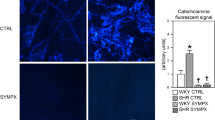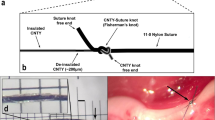Abstract
IN a recent paper from this Department1 the vascular effects produced by stimulation of sympathetic vasomotor fibres at different frequencies were studied and the ‘normal’ discharge-range of these fibres during ‘resting’ conditions and reflex activation of the vasomotor centre was estimated. The conclusion was that normally these fibres fire at very low frequencies (1–2 impulses per second), only exceptionally exceeding 6–8 impulses per second even at strong reflex activation.
This is a preview of subscription content, access via your institution
Access options
Subscribe to this journal
Receive 51 print issues and online access
$199.00 per year
only $3.90 per issue
Buy this article
- Purchase on Springer Link
- Instant access to full article PDF
Prices may be subject to local taxes which are calculated during checkout
Similar content being viewed by others
References
Folkow, B., Acta Physiol. Scand., 25, 49 (1952).
Author information
Authors and Affiliations
Rights and permissions
About this article
Cite this article
CELANDER, O. Quantitative Aspects of the Function of the Sympathico-Adrenal System. Nature 172, 812–813 (1953). https://doi.org/10.1038/172812b0
Issue Date:
DOI: https://doi.org/10.1038/172812b0
Comments
By submitting a comment you agree to abide by our Terms and Community Guidelines. If you find something abusive or that does not comply with our terms or guidelines please flag it as inappropriate.



